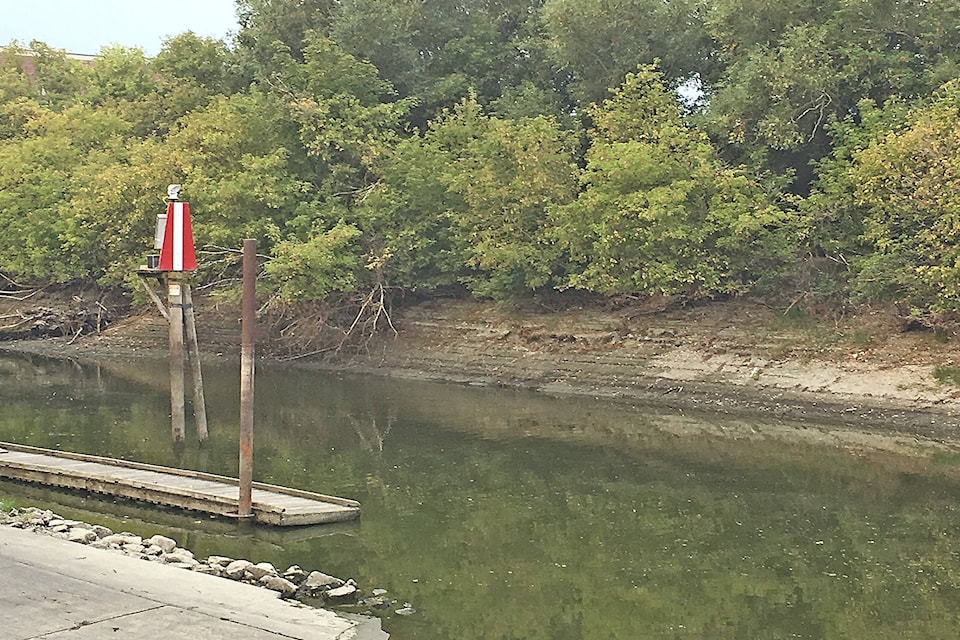There may have been relief in rain over the past few days, but the B.C. Interior has just come through the driest summer on record.
Environment Canada meteorologist Doug Lundquist says Salmon Arm got 12.4 mm of rain in June, 0.8 mm in July and 2.4 mm in August for a “grand” total of 15.6 when it should have been more like 149.3 mm.
“Those are incredibly low numbers,” says Lundquist of the 10 per cent of normal rainfall. “It was an incredibly dry, stressful summer with the potential effects on human physical and mental health from months of smoke. “We had a very unusual, persistent strong high over the province from the last half June.”
Lundquist said the high-pressure flow that usually begins in early to mid July, started earlier in June and didn’t relent with the usual rainfall that arrives in early September.
On Friday, Sept. 8, the Ministry of Forests, Lands and Resource Operations (FLNRO) issued another drought advisory, reminding water users that much of the B.C. Interior, including Salmon Arm, is at level 4, the highest rating on the scale.
This is not the first advisory the province and the City of Salmon Arm have announced, but it seems many people are not getting the message about conserving the precious resource.
“On average this year, June and August saw our highest production and usage of potable water at five million gallons a day,” said Rob Niewenhuizen, director of public works, noting the average use in winter drops to 1.3 million gallons per day.
This month, he says water use is in the neighbourhood of 3.5 million gallons a day, up from two million over last year. With a capacity of 3.5 million gallons of storage and a usage rate of four or five million gallons over the summer, Niewenhuizen says the city was basically just keeping ahead.
“We think it’s irrigation and automatic sprinklers; people are not monitoring them or have them on in middle of the night,” Niewenhuizen says, pointing out that according to the bylaw, nobody may use potable water to irrigate properties of more than half an acre. “We don’t have water meters so we can’t determine where the water is going, that’s what it boils down to.”
City water is taken from the lake and pumped around to 14 reservoirs, incurring both hydro and pumping costs, all of which appear in the annual water bill.
The city tries to fill the reservoirs in evening and on Mondays when the bylaw prohibits watering.
Several hundred residents were handed warnings for breaking the “Monday rule” and their names given to the bylaw officer for a possible ticketing for repeat offences.
At $50 a ticket, it can add up if people don’t stop, says Niewenhuizen, who believes that without water meters, people will continue to over-use the resource.
Green parks and lawns in public places have drawn many complaints, he says, but points out that the city has to protect public infrastructure and costs to replace parks and sports fields would be prohibitive.
City of Salmon Arm sprinkler restrictions end on Sept. 15 but Niewenhuizen says people are being asked to be conscientious and conservative.
“We’re running an average at about 16 million litres a day, last year the number was 10 million.”
Sicamous Mayor Terry Rysz says his community has fared well over the summer.
“So far we’ve been very fortunate; we don’t seem to have the same implications as other communities,” he said Friday of the drought and low lake level, pointing out the beaches have been well-attended, houseboats are going out and boat launches are still operational. “We haven’t been too impacted by water levels but we certainly have been concerned.”
He says the community has been good about conserving water and good drinking water has been readily available.
“This is a positive thing, we built a water treatment plant three years ago,” he says. “All our water comes from the lake a hundred and something feet down so it’s perfect for this sort of condition. There’s no shortage even with lake levels going down.”
We’ve done a very good job as far as building this treatment facility — in my opinion one of the best things we’ve done over the past five years
However, he says boulevards and grass throughout the community have been allowed to go brown.
“It’s a decision we made as a community, rather than spending a lot of time watering things.”
